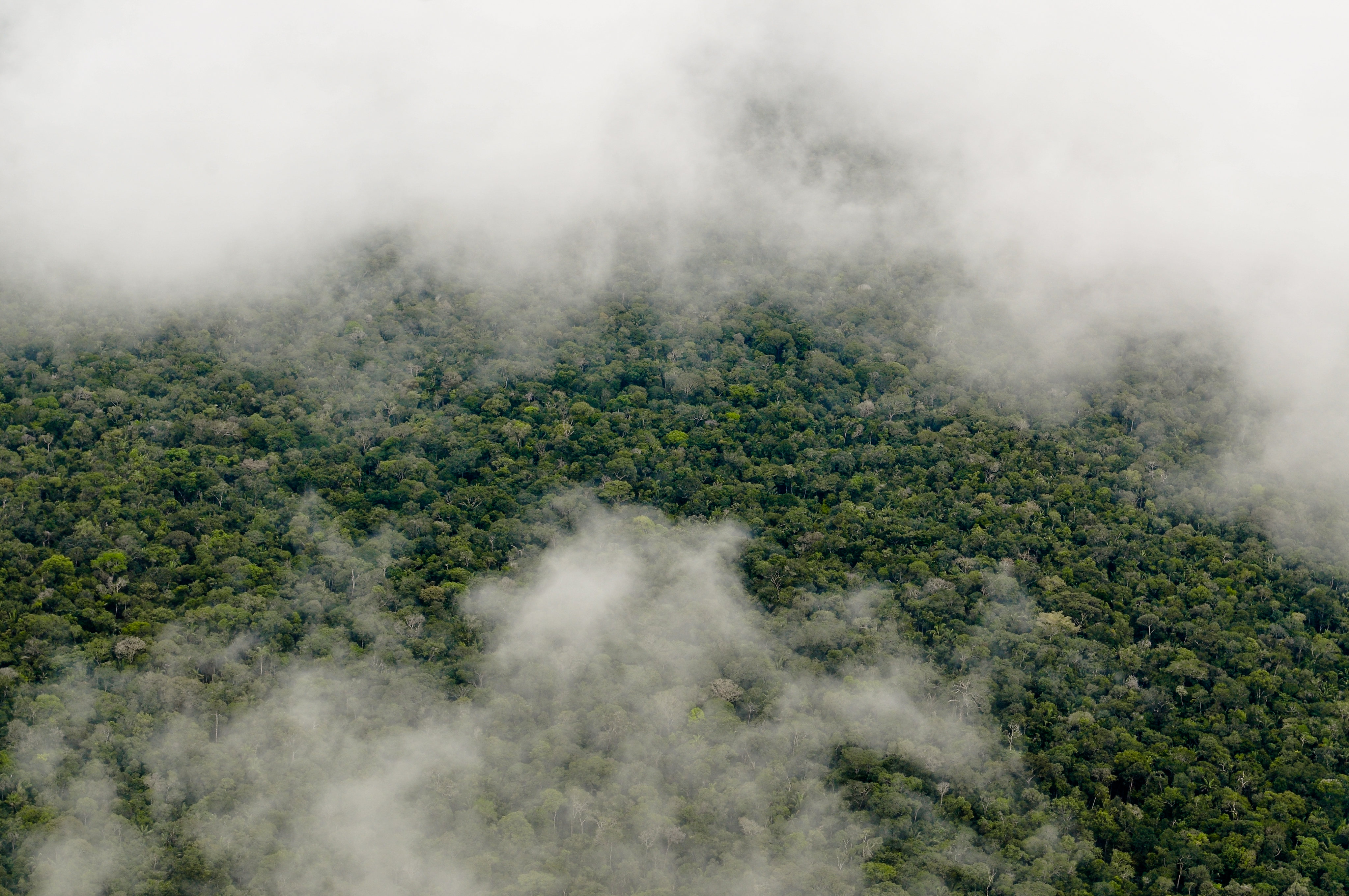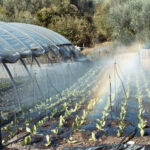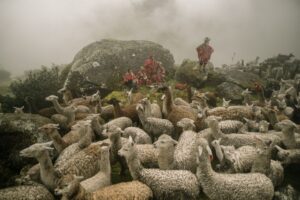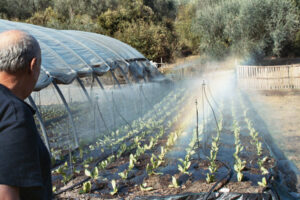I don’t watch films or episodes on Netflix very often. Although I love sitting down to watch a movie, I am predominantly drawn to Mubi or SBS On Demand – a streaming website in Australia – which platform a broader range of films from around the world. But once or twice a month I login to my family Netflix account to see what new titles have been uploaded, appreciating that a gem appears from time to time.
This week I opened my Netflix account and was pleasantly surprised to discover “The Last Forest” on my recommended film list. I was keen to watch the film since it was released last year, having seen posts about it when it was touring film festivals in the first half of 2021, but it wasn’t until September this year while attending a Conference in Brazil, where I had the deep honour of meeting Davi Kopenawa Yanomami, that I understood the film centred around the cosmology and recent experiences of the Yanomami people.
So I press play. The opening titles appear on the screen, accompanied by the sounds of insects. The titles stop and are replaced by a paragraph of words in Portuguese.
“Os Yanomami vivem em um terrirório no norte de Brasil e sul da Venezuela há mais de mil anos. Quinhentos anos antes desses países existirem, eles já estavam lá.”
English subtitles quickly appear below.
“The Yanomami lived in a territory in the north of Brazil and south of Venezuela for over 1000 years. 500 years before either country existed, the Yanomami were already there.”

According to ethnologist Jacques Lizot, who compiled a dictionary of the Yanomami language into Spanish in the 1970s, the word Yanomami is self-referential: when used in the traditional expression of “yanõmami thëpë” it signifies “human beings”. Today the Yanomami number between 29,000 and 38,000, spread over 200 to 250 villages that, as the words on the screen articulated, extend across territory that is often referred to as Brazil and Venezuela.
The words disappear, the sound of wind joins the insects as an image appears, a cloud moves slowly across the screen revealing the deep green of the leaves of the trees of the forest below. In amongst the trees is the black escarpment of Watoriki, “the windy mountain”. At the base of Watoriki, in the bottom right of the screen, is a small circle in an open space between the deep green treetops.
The image changes, a hunter stands on top of a rock holding a bow and arrow that he pulls back and aims at the ground below. He releases the arrow then climbs down from the rock to retrieve it. The sandal on his right foot creates ripples on the water amongst the plants that previously seemed to grow from the ground. The hunter wades through the water, picking up his arrow before inspecting what he was aiming at. He raises the arrow with his right hand and then stabs down at his aim. The image changes, he is now walking into a village with a backpack made of leaves, his bow and arrow in his right hand. Watoriki appears in the background, behind the roof of the structure he walks towards, which I now appreciate was the circle within the open space amongst the deep green trees in the opening scene. The image changes, the hunter is within the structure placing his bow and arrow against a wall close to posts that support many hammocks, he then sits and eats a yellow fleshy fruit that could be a mango or something I have never come across – I imagine there are many fruits I am yet to encounter growing within Yanomami territory – as the backpack of leaves leans against a post a meter or so behind the hunter. The image changes, a woman is now cutting into flesh and meat that sits among the now open leaves of the backpack. The woman cuts scales and flesh with a machete, revealing the hunter killed a kind of turtle. The image changes, the hunter and the woman are walking with two children, the woman holds a young child in her arms, and the five of them walk through the forest towards a stream where they swim. The image changes, this possible family sits and eats the turtle, as the hunter shares stories of hunting the many animals that frequent the nearby stream.
The image changes, the tops of the deep green trees are shadows below the outline of Watoriki. It is night. A voice begins to speak a language I have never heard, English subtitles appear at the bottom of the screen. “White people don’t know us. Their eyes have never seen us. Their ears don’t understand our speech.” The image changes, an older man appears, the orator of the words, he continues speaking. “That is why I must go where white people live. Why is it that I must go there? What will I do in the land of white people? We must not be afraid. They don’t know the Yanomami up close. I don’t want to go there bringing festive food, or traditional dances.” The image changes, and a younger man is sitting on a hammock in the light of a flickering fire as he listens to the older man’s words, “Because we are children of Omama, the last children of the forest, we must fight so that our children grow up healthy, so that our daughters can mature into women.” The image changes, the hunter is lying in a hammock, the light of the fire also flickers on his face, as he listens to the older man finishing his speech, “I must teach them our way of thinking.” The image changes, the older man is standing in the centre of the circle structure, Watoriki stands behind him. Having finished his speech, the older man walks to the right, towards the circle structure, probably to his own hammock, wherever it hangs.
The older man is Davi Kopenawa Yanomami, the shaman and leader I recently had the honor of meeting. At the Conference Davi and I attended, he spoke of the Yanomami’s struggle with what can be described as an invasion of illegal gold miners throughout Yanomami territory, and not just the territory that Brazil has claimed, but the demarcated territory that is recognised by Brazilian law.

I lived my childhood in Research, in the Australian state of Victoria, on Wurundjeri Country, which was similarly invaded during the gold rush that swept through the area in the 19th Century. Hearing Davi’s stories impacted me deeply, thinking of my childhood home, imagining the hills and and trees along the Birrarung River being felled as prospectors engaged in the process of defacing Country to access the gold within its depths, eventually building settlements for migrants like my family.
Earlier this year, in April, a report was released by the Yanomami organizations the Hutukara Associação Yanomami and the Associação Wanasseduume Ye’kwana. Prepared with the Instituto Socioambiental, the report states that “this is the worst moment of invasion” since Yanomami territory was demarcated and ratified thirty years ago, as the growing presence of miners has resulted in “systematic human rights violations” in the communities that live there.
From 2016 to 2020 mining in Yanomami territory grew by 3350%, and since October 2018 the area destroyed by illegal mining activities has increased from over 1,200 hectares to 3,272 hectares (in December 2021). As the above quote mentions, this destruction has also been directed towards Yanomami people. A chronology of attacks by illegal miners appears in the report, along with testimonies of how miners offer food in exchange for sex to starving and malnourished Yanomami teens, made hungry through the destruction of the biome they once subsisted from, which was increased by the the practices and beliefs of the Bolsonaro Government. It also speaks to the proliferation of rape of Yanomami women, as well as the physical and sexual abuse of Yanomami men. It makes for confronting and important reading that highlights the effects of global consumption of gold products, encouraged by humanity’s long-held obsession with gold, even though our financial system is no longer defined by the gold standard.
Through a choreographed scene in the film, Davi Kopenawa Yanomami speaks on a two-way radio explaining the devastating effects of illegal mining on Yanomami territory, which he reflected in a recent interview with anthropologist Ana Maria Machado for the pertinent, inquisitive and profound publication Sumaúma: “Everything is terrible on our land; the miners bring horror with them… they’ve silted up the rivers, polluted the waters, and left the water very dirty where only one river runs. They’ve destroyed the headwaters of the rivers born in our mountains. Those of us who live near the illegal mining sites are suffering, going hungry. The miners keep on coming.”
Obviously these words are not a review of “The Last Forest”, although if I was to reflect on my experience of the story and it’s telling, I was deeply moved and impressed. The mix of documentary and choreographed sequences is seamless, a true achievement of collaborative intercultural storytelling, and a beautiful example of the power of cinema. At times the film reminded me of Apichatpong Weerasethakul’s incredible film “Uncle Boonmee Who Can Recall His Past Lives”, in how it documents and represents the stories of Yanomami cosmology. The way the film gracefully reflects Yanomami life while highlighting the invasion of miners, and their effect, is a true feat that reflects the skill of those involved in the film’s creation, as well as the inherent wisdom of the Yanomami’s way of being.

In an interview with Michael Stütz from the Berlinale Film Festival, the film’s writer and director Luiz Bolognesi explains how Davi Kopenawa Yanomami didn’t want to make a film only about the struggles of the Yanomami people, wanting to also celebrate what is good and strong in their culture, to share how they live. Bolognesi also states that the Yanomami’s struggle against the invasion of miners is something we should all be supporting. He explains “it’s a big problem for all Brazilian people, and it’s a big problem for European people because of the climate change. We have to protect them. If we leave the land with indigenous people the forest is kept alive, if we don’t, if we allow this invasion, we will lose the last jungle.” He goes on to suggest that foreign nations should impose sanctions – much like the recent restrictions on Russia in the face of their invasion of Ukraine – limiting imports on the Brazilian government if their own laws, which should be preserving and protecting Yanomami territory, are not respected. This echoes the words of Davi and Kayapo Chief Raoni Metuktire in a letter they wrote, along with other Yanomami and Kayapo leaders, to then British Prime Minister Boris Johnson, at the beginning of 2020, in anticipation of the UK hosting the COP26 in Glasgow.
Almost three years have passed since that letter and still the same problems persist. There is hope for change with the recent reelection of Luiz Inácio Lula da Silva as Brazilian President, and it’s this hope that I feel when the credits appear at the end of the film, as I close my browser and turn off my laptop, and I feel the wisdom I just received. Lula’s actions will be important for the Yanomami, but so too are our own, we all need to make changes in our respective lives. While it’s easy to demonise the miners currently invading Yanomami territory, it’s important to remember they are inspired and fuelled by the product-driven lifestyles of the Global North, and that colonisation was a key phase of our capitalist society.
Anton Rivette is a writer and photographer. He leads storytelling at eco-nnect.













